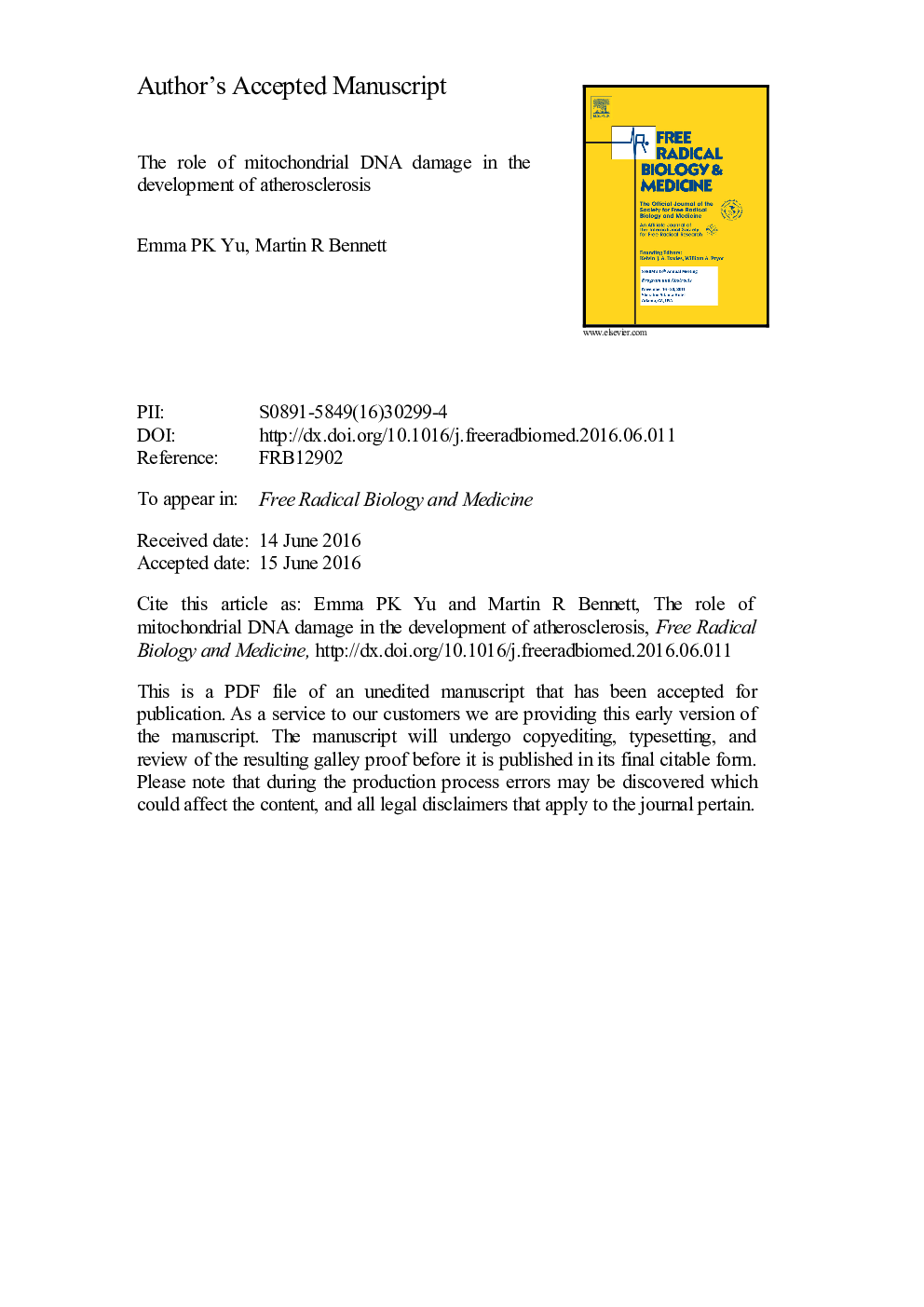| Article ID | Journal | Published Year | Pages | File Type |
|---|---|---|---|---|
| 5501925 | Free Radical Biology and Medicine | 2016 | 32 Pages |
Abstract
Mitochondria are the cellular powerhouses, fuelling metabolic processes through their generation of ATP. However we now recognise that these organelles also have pivotal roles in producing reactive oxygen species (ROS) and in regulating cell death, inflammation and metabolism. Mitochondrial dysfunction therefore leads to oxidative stress, cell death, metabolic dysfunction and inflammation, which can all promote atherosclerosis. Recent evidence indicates that mitochondrial DNA (mtDNA) damage is present and promotes atherosclerosis through mitochondrial dysfunction. We will review the mechanisms that link mtDNA damage with atherosclerotic disease, and identify mitochondrial processes that may have therapeutic benefit.
Keywords
DAMPDrp1TLRPAMPTFAMMPTPVSMCFGF21cyclic GMP-AMP synthasemitochondrial outer membrane permeabilisationNFκβCgasAMPKAMP activated protein kinaseMitochondrial DNAopa1ROSAtherosclerosisoptic atrophy 1inflammationdamage-associated molecular patternpathogen-associated molecular patternmitochondrial permeability transition poreinterferonIFNToll-like receptormtDNAVascular smooth muscle cellmitochondrial transcription factor Afibroblast growth factor 21nuclear factor kappa betaTRAILtumour necrosis factor-related apoptosis-inducing ligandMOMPstimulator of interferon genesMitochondriaSTINGdynamin-related protein 1Reactive oxygen species
Related Topics
Life Sciences
Biochemistry, Genetics and Molecular Biology
Ageing
Authors
Emma P.K. Yu, Martin R. Bennett,
